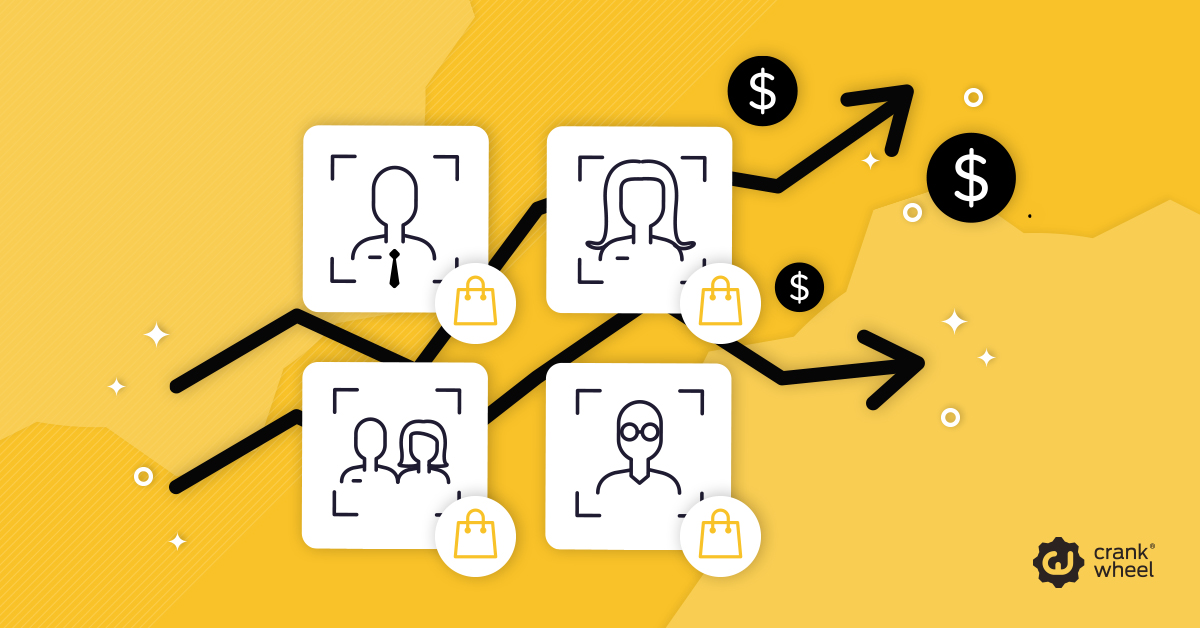Why purchase segmentation is the key to revenue growth
Sales is, without a doubt, the key driving force behind the growth of every company. Growth is not rocket science. Sales teams do not need complex algorithms and AI-powered computers to drive forward growth.

In many ways, the formula for growth is fairly simple: win new customers, retain them, and grow revenue from those customers. If you aren’t in the business of winning, growing and retaining customers, then you won’t stay in business for very long.
However, as anyone knows who’s been in sales any amount of time, the most effective salespeople - like pro athletes - make it look easy. Make no mistake, it isn’t easy; but if you focus on the right accounts and prospects at the right time, it doesn’t have to be rocket science. Having a clear understanding of your customers is an essential component of any successful sales strategy.
As part of understanding your customers, there is a tool you can use known as purchase segmentation.
What is purchase segmentation?
Purchase segmentation is not market segmentation. With market segmentation, sales teams are taking a top-down approach towards deciding where and how to place bets and direct resources. It is a way of deciding which markets to enter, what sectors and segments. As a starting point for a new sales campaign, market segmentation is the right approach.
Purchase segmentation is a bottoms-up approach and is much more useful as an account management tool. It is a way of smartly and accurately assessing clients; using this information to target above-market growth opportunities.
Sales leaders can use purchase segmentation in the following ways to achieve growth objectives:
- Identify intelligent account management opportunities that align with sales goals/quota assignments and territory allocations;
- Define a sales strategy that aligns with corporate objectives, while increasing sales agent productivity and outcomes;
- Align resources based on account potential. When sales reps have too many accounts to manage, they can’t always maximise opportunities from those with the most potential. Segmentation reduces the risk of missing opportunities as a result of territory allocation and misalignment.
How to use purchase segmentation to increase revenue?
There are a number of ways of identifying the most viable opportunities in your client accounts. Getting a clear handle on propensity to buy (PtB) factors is the most effective way to pinpoint the clients and prospects that are most likely to buy your products and services, and do so within a reasonable timescale to ensure your team hits target.
Going through account spend data manually - within a CRM - is one way. If you’ve got more data than one person can reasonably go through in a working week, it might be necessary to bring in a big data expert with the right tools and experience to crunch the numbers.
Some companies use this opportunity to identify sales prospects within companies that fit a similar profile to those in your client database.
Depending on the size of these sales opportunities, and the amount of data available, some PtB models use demographic and firmographic information to score prospects.
There are solutions, such as such as Hoovers or Capital IQ, that collect public and private company information; this can contribute to scoring models.
However, there is no need to make this more complex than necessary.
As a sales leader, you need to know the following to conduct purchase segmentation:
- Which customers spend the most
- Which customers spend more often than others
- Which customers show the most potential to spend more
- And from our prospects pipeline, which fit a similar profile (likely to spend, spend often and could be a valuable account)?
Once you’ve got this information, there are cost-effective ways to allocate resources and direct the team to increase revenue and hit target.
- 1: Prioritize accounts with a high propensity to buy (fairly frequent high-value purchases) and a high potential to keep spending this way.
- 2: Nurture accounts with a high propensity to buy (infrequent high-value purchases) and a low potential (to increase the number of times they make purchases, or the number of products/services they use).
- 3: Monitor and nurture accounts with a low propensity to buy (infrequent low-value purchases) and a high potential (viable prospects to increase spend and purchase frequency).
- 4: Reduce the priority ranking and therefore time spent with accounts that have a low propensity to buy and a low potential.
Every year, sales leaders are challenged to achieve targets with the same amount or even reduced resources. Growth is never consistent, and although it isn’t rocket science, it isn’t easy to hit target every year.
Using proven models, you can more accurately identify how and where to allocate resources and time, generating more from accounts that are happy to spend more with you while focusing on viable prospects in the external pipeline.
